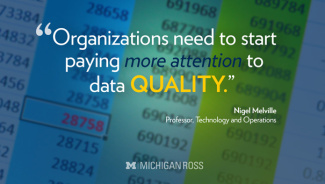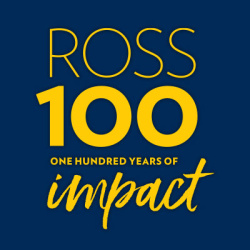New Research Shows Reporting Accuracy, Often Lacking, Is Vital to Reaching Environmental Goals

In the finance world, outside audits and reviews of accounting systems are a routine part of checks and balances.
But it’s less common in the field of measuring carbon-reduction efforts and it shows, according to new research by Michigan Ross Professor Nigel Melville. He and co-authors Terence J.V. Saldanha of Washington State University and Daniel E. Rush of Boise State University studied the kinds of systems companies use to track environmental stewardship.
Their research shows that a widely used approach that companies employ to keep track of carbon-cutting efforts — the spreadsheet — has a number of drawbacks. They also used data from the Carbon Disclosure Project (CDP) to show that companies that invest in more accurate systems are more likely to reach their environmental goals, and are more likely to include managerial incentives for hitting targets.
Their paper, “Systems Enabling Low-Carbon Operations: The Salience of Accuracy,” was published in the Journal of Cleaner Production.

“We found that a lot of companies have a process to capture environmental data, store it, manage it, and convert it into useful information,” says Melville, professor of technology and operations. “What they often lack, though, is a system to do quality and accuracy checks. And that matters. You might have the right intentions and culture, but if there’s a gap in the quality of your data that affects the quality of decision making. These kinds of quality checks are standard in the finance and accounting world. Organizations need to start paying more attention to data quality in the environmental reporting world.”
Spreadsheets are easy to use and low cost, so many companies use them to track environmental information. But the researchers found that while spreadsheets are useful for developing a baseline objective or initial inventory of a carbon footprint, the spreadsheet approach fails in many other areas. For example, spreadsheets are less effective for aiding management decisions, for combining environmental data with financial data, and for supporting data collection workflow across a large organization.
Using a more specialized system (developed in-house or cloud-based) designed to incorporate the specific needs of environmental reporting can improve accuracy, enhance the frequency of data updates, and enable merging of environmental and financial information for enhanced decision making.
Melville and his colleagues also studied survey responses and carbon data from companies responding to the Carbon Disclosure Project annual questionnaire. They found a positive association between attention to system accuracy and both the adoption of managerial incentives and the presence of reduced emissions.
Melville said SAP, the German software firm, is an example of a company doing this well. It created its own carbon management system that includes dashboards for easily understood emissions monitoring from a business perspective to support managerial decision making. For example, such a system can quantify how a management decision like reducing air travel and doing more video conferencing cuts carbon emissions and saves costs.
“If a company says it’s all in on sustainability, they need to ask themselves if they’re really making the investment in systems that ensure effective environmental data management, including accuracy,” Melville says. “It’s an investment, and as our research suggests, it’s an investment that can pay off: The companies that get it right are able to grow revenue while reducing emissions.”
Media Contact: michiganrosspr@umich.edu







